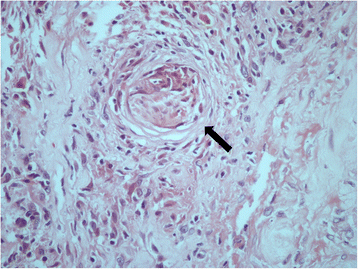
J Exp Med 215:1627–1647Ĭserép C, Pósfai B, Lénárt N, Fekete R, László ZI, Lele Z, Orsolits B, Molnár G, Heindl S, Schwarcz AD (2020) Microglia monitor and protect neuronal function through specialized somatic purinergic junctions. Brain 143:266–288Ĭronk JC, Filiano AJ, Louveau A, Marin I, Marsh R, Ji E, Goldman DH, Smirnov I, Geraci N, Acton S (2018) Peripherally derived macrophages can engraft the brain independent of irradiation and maintain an identity distinct from microglia. Proc Natl Acad Sci 102:16078–16083Ĭrapser JD, Ochaba J, Soni N, Reidling JC, Thompson LM, Green KN (2020) Microglial depletion prevents extracellular matrix changes and striatal volume reduction in a model of Huntington’s disease. J Neuroinflammation 17:1–20Ĭonway JG, McDonald B, Parham J, Keith B, Rusnak DW, Shaw E, Jansen M, Lin P, Payne A, Crosby RM (2005) Inhibition of colony-stimulating-factor-1 signaling in vivo with the orally bioavailable cFMS kinase inhibitor GW2580. Clin Immunol 185:100–108Ĭoleman LG, Zou J, Crews FT (2020) Microglial depletion and repopulation in brain slice culture normalizes sensitized proinflammatory signaling. Neurochem Int 127:137–147Ĭhalmers SA, Wen J, Shum J, Doerner J, Herlitz L, Putterman C (2017) CSF-1R inhibition attenuates renal and neuropsychiatric disease in murine lupus. Neuro Oncol 18:557–564Ĭengiz P, Zafer D, Chandrashekhar JH, Chanana V, Bogost J, Waldman A, Novak B, Kintner DB, Ferrazzano PA (2019) Developmental differences in microglia morphology and gene expression during normal brain development and in response to hypoxia-ischemia. Nat Neurosci 17:131–143īutowski N, Colman H, De Groot JF, Omuro AM, Nayak L, Wen PY, Cloughesy TF, Marimuthu A, Haidar S, Perry A (2015) Orally administered colony stimulating factor 1 receptor inhibitor PLX3397 in recurrent glioblastoma: an Ivy Foundation Early Phase Clinical Trials Consortium phase II study. Immunity 43:92–106īutovsky O, Jedrychowski MP, Moore CS, Cialic R, Lanser AJ, Gabriely G, Koeglsperger T, Dake B, Wu PM, Doykan CE (2014) Identification of a unique TGF-β–dependent molecular and functional signature in microglia. Nat Rev Neurosci 15:209–216īruttger J, Karram K, Wörtge S, Regen T, Marini F, Hoppmann N, Klein M, Blank T, Yona S, Wolf Y (2015) Genetic cell ablation reveals clusters of local self-renewing microglia in the mammalian central nervous system.

9:e1230575īrown GC, Neher JJ (2014) Microglial phagocytosis of live neurons. J Mol Histol 53:333–346īisht K, Sharma K, Lacoste B, Tremblay M-È (2016) Dark microglia: why are they dark? Commun. Front Mol Neurosci 10:191īarati S, Kashani IR, Tahmasebi F (2022) The effects of mesenchymal stem cells transplantation on A1 neurotoxic reactive astrocyte and demyelination in the cuprizone model. J Mol Neurosci 63:308–319Īrcuri C, Mecca C, Bianchi R, Giambanco I, Donato R (2017) The pathophysiological role of microglia in dynamic surveillance, phagocytosis and structural remodeling of the developing CNS.

For these reasons, the inhibition of microglia with these models was considered a therapeutic approach for neurodegenerative disease treatment.Īffram KO, Mitchell K, Symes AJ (2017) Microglial activation results in inhibition of TGF-β-regulated gene expression. Recently, studies showed that microglial depletion as a potential therapeutic application has benefits (such as inflammatory factors reduction, increase synaptogenesis, astrogliosis preventation) in CNS. In this study, we review recent studies that used different microglial ablation models for microglial reduction and repopulation after depletion in pathological states of CNS. There are methods for microglial ablation and reduction such as genetic tools and pharmacological inhibitors.

Thus, microglial depletion of the CNS is a novel approach that could be a useful tool to understand the microglial functions in neurodegenerative and neuroinflammatory diseases. Microglia show key roles in healthy CNS including promoting neurogenesis, synaptic sculpting, and maintaining homeostasis but in pathological conditions of CNS, microglial activation may exacerbate diseases. Microglia originate from yolk sac macrophages and migrate to the brain before the blood–brain barrier formation. These cells are the first line of defense that protects the CNS from damage and attacking pathogens. Microglia are the primary immune cells of the central nervous system (CNS) that comprise about 5–12% of all cells in the brain.


 0 kommentar(er)
0 kommentar(er)
